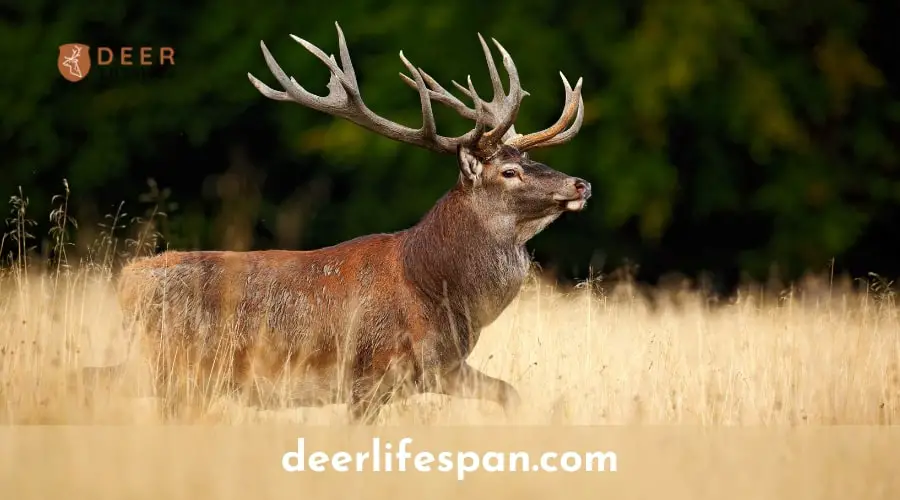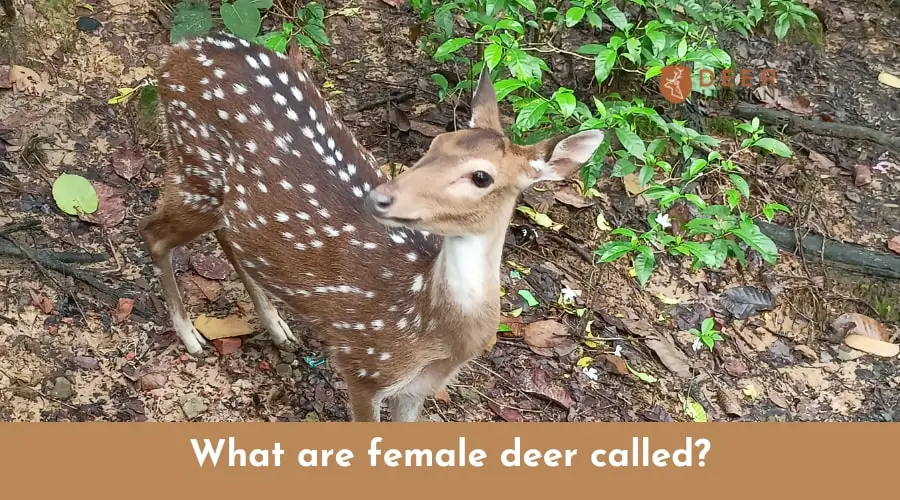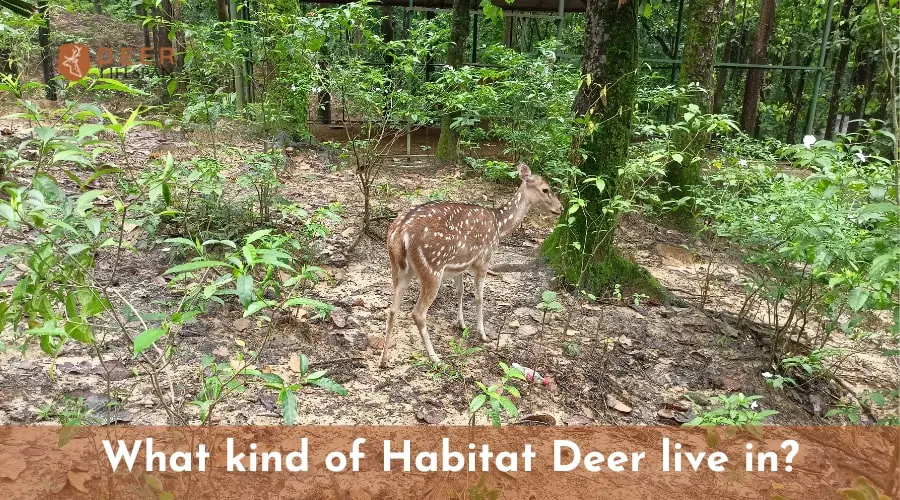There are 43 species of hoofed ruminants in the order Artiodactyla and among them, there is the family of Cervidae which are the deer.
The notable features of a deer are its two large and two small hooves on each foot and the antlers in the male of most species. One female species of deer also has antlers.
Deer are native to 5 continents: Asia, Europe, Africa, North America, and South America. Many species of deer are considered game animals due to their attractive antlers
One species of deer, the reindeer ( also known as the caribou) has been domesticated. Some species are endangered especially the ones living in swamps and islands.
Most continental species of deer are flourishing as they are protected and have good management.
When granted protection, deer seem to exploit man-made disturbances caused by agriculture, forestry, and urbanization.
The white-tailed deer is considered a high-quality game animal in the North American continent. They are fair game as they are also considered pests in suburbs and cities in the united states and Canada.
Table of Contents
- What are male deer called?
- What are female deer called?
- What is a baby deer called?
- What is a group of deer called?
- Morphology of Deer
- Old World Deer vs New World Deer

What are male deer called?
Male deer are classified as bucks along with other animals such as goats, hares, rabbits, and rats. Another name for a male deer is a stag which is another word for a buck. Male red deer are called harts. Hart is also used to describe a stage that is five years or older.

What are female deer called?
The most common name used for adult female deer is a doe. Similar to male deer, female deer are also called harts and stags.

What is a baby deer called?
A baby deer is called a fawn. They usually are found around fields and meadows in the summer and in forests during winter. For a deer to be called a fawn it has to be less than a year old.
What is a group of deer called?
A group of deer is often referred to as a herd of deer or just a herd. A group of deer is called a mob, a parcel, or a rangale.
Morphology of Deer
In almost all species of deer, the male is the one who has the antlers. All reindeer have antlers regardless of their gender.
The only species of deer that don’t have antlers is called the Chinese water deer.
Some deer have tusks which they use for slashing and stabbing in territorial contests. Some species have both tusks and antlers.
Among the distinguishable characteristics of deer, there is the fact that deer don’t have gallbladders. Female deer have four teats. Some deers also have scent glands on their legs but no rectal or vulva glands.
Deer are herbivores. This can be confirmed when studying their large and anatomically complex digestive system.
Unlike bovids, deer do not have the habit of grazing. This is why they rely little on coarse fibred grasses.
Deers are highly selective about what they eat. Their diet mainly consists of woody shoots, foliage, buds, aquatic plants, young grasses, fruits, herbs, lichens, and natural ensilage. Essentially they feed on plants that have low fiber but high protein content.
Deer feed on high protein content instead of high-fiber plants because they need the protein and minerals in such food for the growth of their antlers. The size and growth of their antlers are directly linked with their diet.
The antlers of a deer are directly linked with their bones and are grown and shed every year. The growing antlers are surrounded by a layer of velvet which is a highly vascularized skin covered by short soft hair.
While growing these antlers are covered in blood and are quite sensitive. A deer can take up to 150 days to fully grow its antlers depending on the species.
Once the antlers have grown fully the velvet around them dies and dries up. This is then manually removed by the deer as it rubs its antlers against branches and small trees.
Deer’s antlers will finish growing before the mating season and are used as both weapon and shield while fighting other male deer over a mating partner.
Some tropical territorial deers keep their antlers for more than a year. The larger these antlers get the higher the deer’s demand for food and energy.
What kind of Habitat Deer live in?

Larger species of deer require a lot more food and energy to grow the same size antlers as that of species with smaller body mass.
The need for constant food and energy for deers is the reason they prefer habitats that are relatively productive.
This is why deer avoid deserts, dry grasslands, and geologically old landscapes leached of nutrients.
Deers have evolved to live in disturbed ecosystems. Such as ecosystems affected by wildfires, storm floods, or wind-felled trees. This is because such ecosystems have fewer competitors for food and are nutrient-rich yet immature.
Such ecosystems lack large trees and long grass but have an abundance of small fruits, nuts, buds, etc, which are the main food sources in a deer’s diet.
Ideally, a deer’s ecosystem is one that changes or faces disturbance annually such as areas near a lake where the water level changes annually. This creates an everchanging ecosystem in which many mammals cannot live this makes it ideal for deer as they will have fewer competitors for food.
How Deer Avoid Predators?
As for a deer’s antipredator strategies, deer are very divergent.
Some deer species hide and if discovered departs in rapid jumps to hide again. These deer are found in thick forests as there is an abundance of hiding places while having small sightlines.
Other species of deer are highly specialized runners who need flat, unobstructed terrain to outrun predators.
Near steep sloppy plains, you can find species of deer that are specialized jumpers. They have a lot of verticality in their mobility which allows them to outmaneuver predators.
Old World Deer vs New World Deer
The family Cervidae can be divided into two very different groups, the Old world deer and the new world deer. This division reflects where the deer originally evolved.
Old World Deer
They include the 11 species of tropical Asian deer which are more primitive. The male of these species bears tusks and antlers on tall antler pedicles.
Another variation of old-world deer includes the deer found in the subtropical ecosystem of countries such as India. These deer are usually large and have a basic three-pronged antler plan.
Old-world deer usually have a basic four-pronged antler structure and live in temperate zones.
They include the sika from Japan and the fallow deer of Asia Minor. The sika can be thought of as the ancestors of the more common red deer and elk.
New World Deer
These deer come from the colonies of North and South America as well as some parts of Eurasia. A noteworthy species of deer from the New world deer is the moose (Alces alces), which is the largest species of deer.
It also includes reindeer the most plains-adapted runner among deer with relatively large antlers.
It is speculated that these deer originate from the ice age and evolved from the grotesque giants that used to inhabit these ecosystems before the ice age.
New world deer from Eurasia are the small roe deer and the antlerless Chinese water deer which are from Korea.
Other species included in this group are the dwarf brocket deer from Mexico, and the pudu from Chile. The pudu is one of the smallest species of deer standing only 30 cm at the shoulder.
